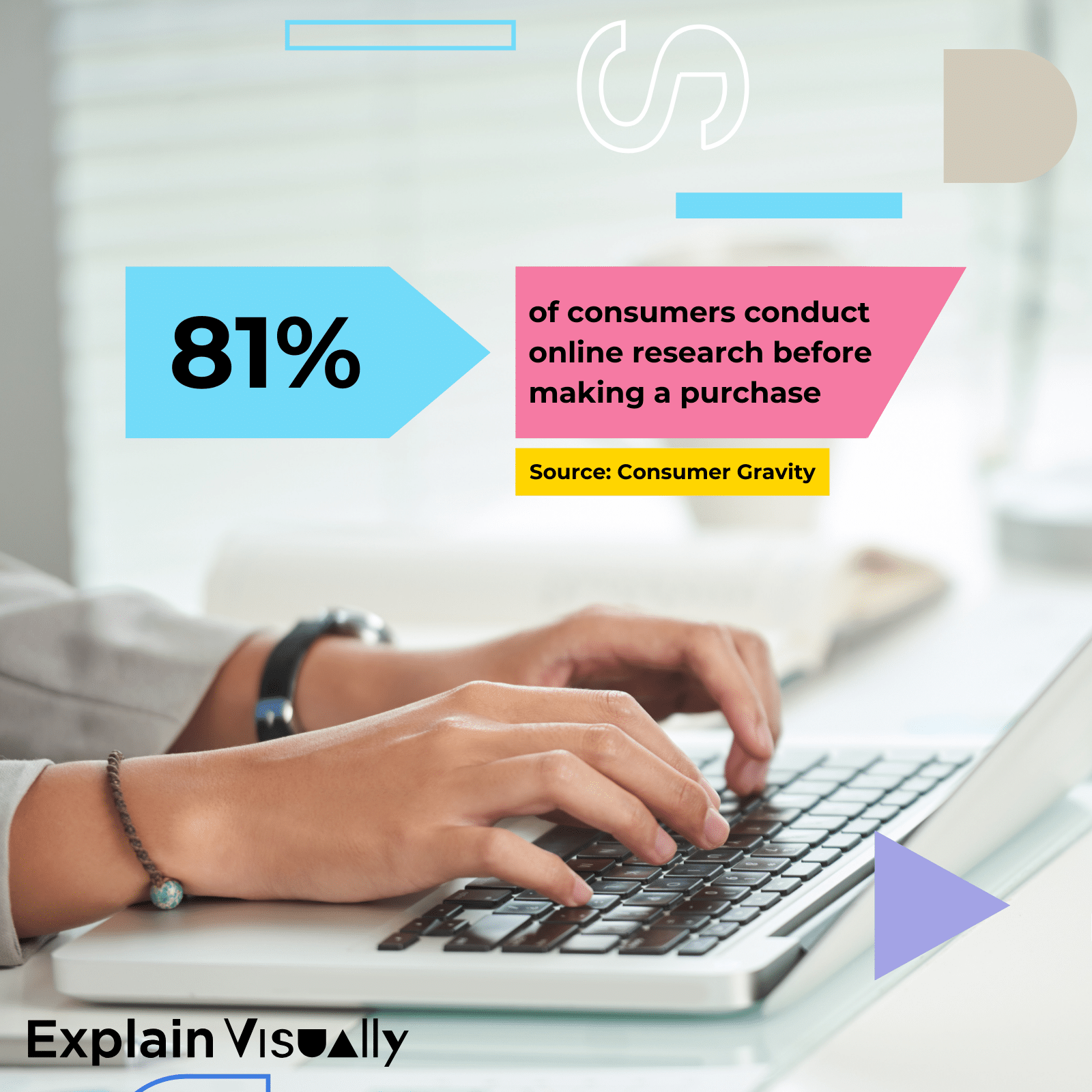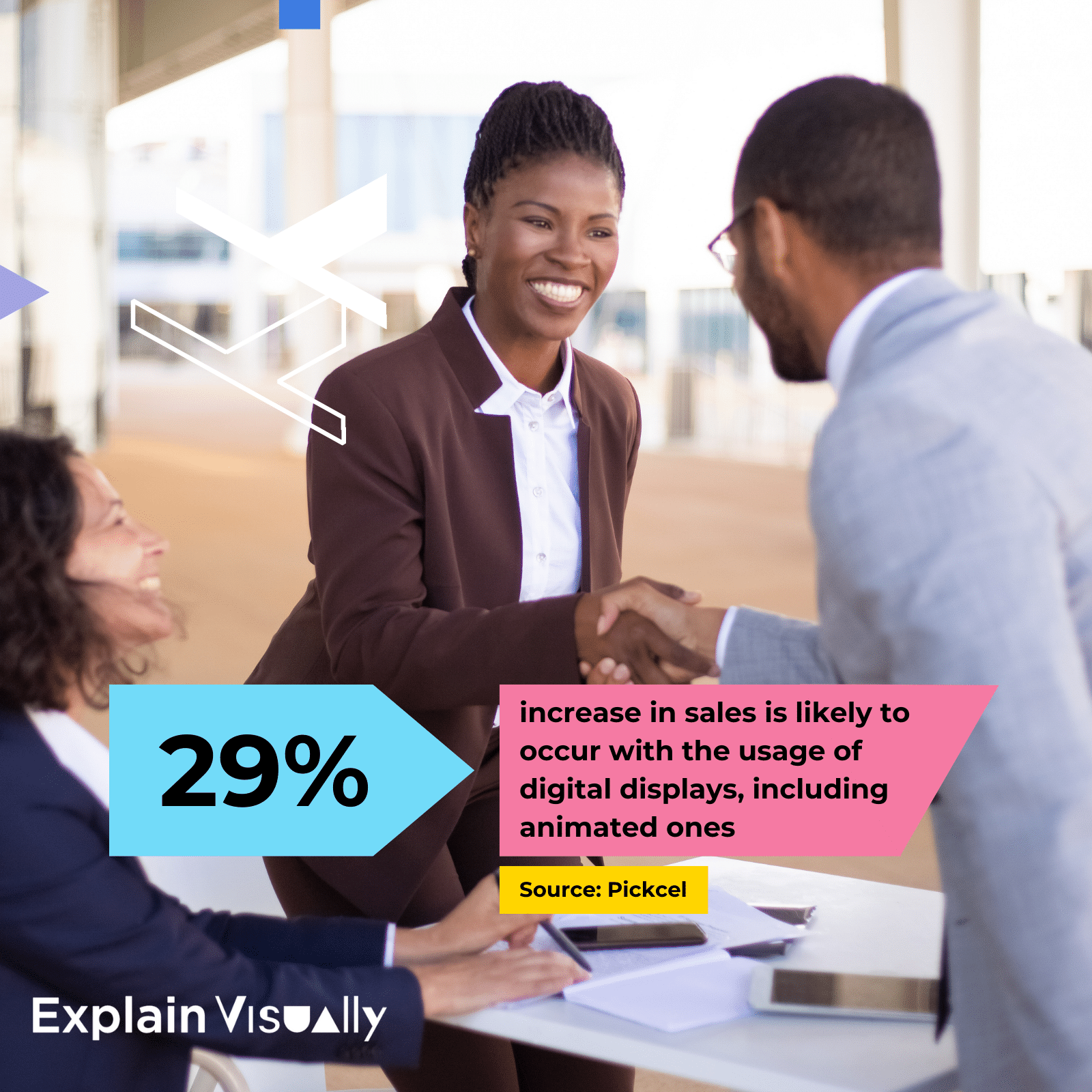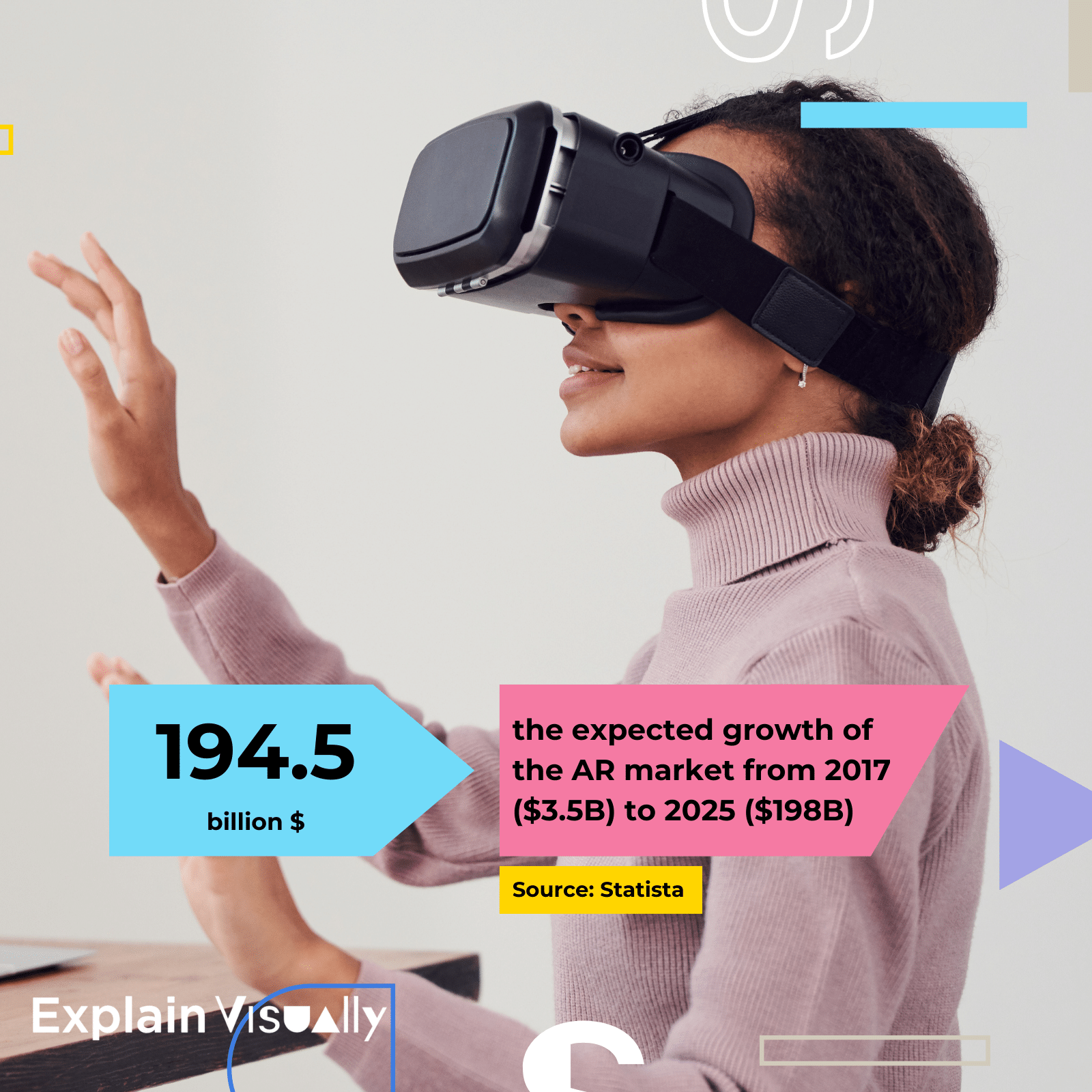Introduction
In today’s busy retail world, standing out means more than just having good products and services. The focus is now on making the customer experience great, which is key to being successful in retail. With technology moving fast, customers want shopping to be fun, personal, and smooth, both online and in stores. Retailers are always looking for new ways to meet these needs and keep customers coming back.
One exciting way to improve retail is through animation. Animation can change how customers see brands by creating fun, engaging, and lively experiences. From animated ads and in-store displays to interactive online content and virtual try-ons, the possibilities with animation are endless for making customers happy and involved.
In this article, we’ll look at how retail has changed and why customers now expect more. We’ll see how animation helps tell stories, show products, and keep customers engaged. We’ll share real examples and success stories of how animation makes a difference in customer experience. Plus, we’ll give tips for using animation well and talk about future trends like augmented reality (AR) and artificial intelligence (AI) that will make retail even more exciting.
The Evolution of Retail and Customer Experience
Retail has changed a lot over the years due to social, economic, and technological shifts. In the early 1900s, department stores became popular, offering a variety of products all in one place. Later, shopping malls took over in the mid-1900s, with over 4,500 malls in the U.S. by 1960, making up 14% of all retail sales.
In the 1960s, big-box stores like Walmart and Target changed the game by offering lots of products at low prices. Walmart opened its first store in 1962 and by 2018, its sales were over $500 billion.
The 1990s brought the digital transformation with e-commerce, led by companies like Amazon. Amazon started as an online bookstore in 1995 and by 2018, it made over $10 billion in net income. By 2023, online sales are expected to make up 22% of global retail sales.
The COVID-19 pandemic sped up the move to online shopping, with more people buying things online. Now, about 81% of consumers check online before buying something. Mobile shopping has also grown a lot, with people using their smartphones and tablets to browse and buy products.

Customer expectations have changed a lot. Today, people want personalized shopping experiences, and 38% of retail purchases now happen through multiple channels. Retailers use data to customize shopping for each person, hoping to makes customers happier and more loyal.
By looking at these past trends and current expectations, we can see how animation can improve customer experience in retail. Animation can create fun, immersive, and personalized experiences that resonate with today’s tech-savvy shoppers.
The Power of Animation in Retail
Animation is great at grabbing attention and making experiences memorable. Studies show that videos, including animations, are more likely to be shared and remembered than just images or text, and they can boost organic traffic from search engines by 157%. Product videos are the most common type businesses make, making up 43% of all videos. Because animations are so engaging, they can lead to more sales and improve loyalty.

Storytelling through animation is a good way to share a brand’s story in a fun and relatable way. Animated stories can stir emotions and connect with people on a deeper level, boosting how they see the brand. Brands like Coca-Cola and Apple have used animated videos successfully to tell their stories, creating strong emotional bonds with their audiences. Animation gives brands the creative freedom to show their values, mission, and unique selling points in an engaging way.
Animation is also great for showing off products and services, making them more appealing and easier to understand. For online retailers, animated product demos can highlight features and benefits, helping customers make better buying decisions and feel more satisfied. For example, IKEA uses animated videos to show how to assemble furniture, giving clear instructions that improve the customer experience. Animation can also explain complex ideas, making it easier for customers to understand and see the value of a product or service.
By using animation, retailers can increase engagement, tell compelling stories, and show off their products more effectively. This not only improves the customer experience but ultimately also boosts sales.
Practical Applications of Animation in Retail
Animated Ads
Animated ads are a very effective at grabbing and keeping customer attention. Studies show they can boost conversion rates by 20% compared to static ads. Their visual appeal and dynamic nature make them stand out in busy digital spaces, helping people remember the brand and stay engaged. Companies like Coca-Cola and Nike have used animated ads successfully to create memorable campaigns and drive sales.
In-Store Displays
Animated in-store displays can make shopping more fun and interactive. Research shows that digital displays, including animated ones, can increase sales by up to 29%. These displays can highlight promotions, give product information, and entertain customers while they shop, making the experience more enjoyable and informative. For example, Sephora uses animated screens to show makeup tutorials and product benefits, helping customers make informed decisions and improving their in-store experience.

Online Shopping
Animation makes online shopping easier through dynamic product demos and virtual try-ons. Animated product videos can boost online conversion rates by up to 80% because they help customers understand features and benefits more easily. Virtual try-ons, using augmented reality (AR), let customers see how products will look on them, reducing the guesswork of online shopping. Brands like Warby Parker and IKEA use virtual try-ons and animated assembly guides to make shopping more interactive and satisfying.
Interactive Content
Interactive animated content grabs and keeps customers attention for longer and personalizes their shopping experience. Personalized animations, like interactive product configurators and custom recommendations, can greatly boost customer satisfaction, and decrease the number of returns. Stats show that interactive content gets twice the engagement of static content. Retailers like Adidas and Nike let customers design their own shoes with interactive animated content, creating a unique and fun shopping experience that encourages repeat business.
By using animated ads, in-store displays, enhanced online shopping features, and interactive content, retailers can make shopping more engaging, informative, and personalized. This not only makes customers enjoy the experience more but also increases the chance of them coming back with their business.
Case Studies and Success Stories
Brand Examples
Several brands have successfully integrated animation into their retail strategies, and here are a such examples.
- Coca-Cola: Coca-Cola has utilized animation in various campaigns to tell captivating stories and entice customers. One notable example is the “Coca-Cola Happiness Factory” commercial, which takes viewers inside a magical vending machine world where animated characters create the perfect Coke experience.
- Nike: Nike’s animated advertisements effectively capture customer attention and communicate brand messages. The “Nike Air Max Day” 3D billboard campaign in Shinjuku, Tokyo, features fast paced animations showcasing the evolution of the Air Max shoe line, engaging customers with stunning visuals, that are eagerly shared on social media.
- Slack: Slack’s “Work, Simplified” animated ad showcases how their platform streamlines communication. The continuous panning and use of brand colors make the animation memorable, effectively highlighting Slack’s features without the need for a voiceover or on-screen text.
Customer Feedback
Customer feedback highlights the positive impact of animation on engagement and satisfaction. For instance, a customer review of the Coca-Cola Happiness Factory praised its creativity and engagement, noting that the ad made the brand feel more relatable and enjoyable.
Nike’s animated ads have also received positive feedback, with viewers commenting on the engaging visuals and innovative format. One customer noted, “The animation in the Air Max Day ad was incredible. It really captured the essence of the brand and got me excited about the new shoes.”
Performance Metrics
Data and metrics demonstrate the effectiveness of animation in improving customer experience and sales:
- Coca-Cola: The Happiness Factory campaign led to a significant increase in brand love and purchase intent, with studies showing a 20% increase.
- Nike: The Air Max Day 3D billboard campaign resulted in a 25% increase in social media engagement and a 15% boost in sales during the campaign period.
- Slack: The animated ad helped Slack clearly convey its message, contributing to higher engagement rates and positive reception among users.
By integrating animation into their retail strategies, brands like Coca-Cola, Nike, and Slack successfully connect with customers, improve the shopping experience, and increase sales.
Implementation Strategies for Retailers
To use animation effectively in retail, stores need to assess their needs, pick the right type of animation, work with experts, and blend it smoothly with their existing platforms.
Assessing Needs
Retailers should start by looking at their current marketing strategies to see where animation can add the most value. Key areas to consider include:
- Customer Interaction: Identify high interaction points and use animation to enhance them. For example, animated ads on social media can increase interaction and sharing.
- Product Demonstration: Products that need visual explanation, like tech gadgets or furniture, can benefit from animated demos showing features and how to use them.
- In-Store Experience: In physical stores, use animated displays or interactive kiosks to engage customers and provide more product info.
- Online Experience: Look at the e-commerce platform to find spots where animations, like virtual try-ons or product tours, can improve the user experience and reduce hesitation to buy.
Choosing the Right Type of Animation
Different types of animations can serve various purposes in retail. Understanding their strengths can help in choosing the best one for your situation:
- 2D Animation: Ideal for storytelling and simple product demonstrations. It’s cost-effective and versatile, making it suitable for social media ads and explainer videos.
- 3D Animation: Best for detailed and realistic product visualizations. It’s useful for industries like automotive or furniture where seeing the product from multiple angles can influence purchasing decisions.
- Motion Graphics: Great for creating engaging content that combines text and visuals to explain complex information quickly. This type is effective for promotional videos and digital signage in stores.
Partnering with Animation Experts
To ensure high-quality animation, partnering with professional animation companies can be the right way to go. Here’s why:
- Expertise and Quality: Professional animators bring expertise in creating visually compelling and effective animations. They can produce content that aligns with your brand and marketing goals, because they understand your business.
- Cost Efficiency: While it might seem cheaper to produce animations in-house, professional studios often deliver better ROI due to their efficiency and higher quality output. They can usually also do it faster, and with fewer iterations.
- Creative Input: Animation experts can offer creative ideas and innovations that you might not have considered, providing fresh perspectives on how to engage your audience effectively.
Integrating with Existing Platforms
These are some of the ways you can integrate animations with your existing ecosystem:
- Website Integration: Use them on product pages, tutorials, and landing pages to keep users interested. Optimize animations for the web so they don’t slow down your site.
- Social Media: Customize animations for each social media platform. Short, engaging animations are great for Instagram and TikTok, while more detailed ones work well on YouTube.
- In-Store Displays: Use digital screens to show animated content that grabs customers’ attention. Keep the content relevant and update it regularly.
- Email Marketing: Add animated GIFs and short videos to emails to increase open rates and clicks. Animated content can make newsletters and promotional emails more appealing.
Future Trends in Retail Animation
Augmented Reality (AR) and Virtual Reality (VR)
AR and VR are changing the retail sector by offering immersive and interactive shopping experiences. AR allows customers to visualize products in their own environment through their smartphones or AR glasses. For example, IKEA’s AR app, IKEA Place, allows customers to place virtual furniture in their homes to see how it fits and looks. According to a report by Statista, the AR market is expected to grow from $3.5 billion in 2017 to $198 billion in 2025.

VR provides an entirely immersive experience, allowing customers to explore virtual stores from the comfort of their homes. Retailers like Alibaba have launched VR shopping experiences, where customers can navigate a virtual mall and shop as if they were physically present. Research indicates that by 2022, the market for AR and VR in retail is expected to reach $1.6 billion. These technologies not only enhance the customer experience but also reduce return rates by helping customers make more informed purchase decisions.
Personalization and AI
AI-driven personalized animations are changing retail by catering to individual customer preferences. Personalization is crucial in modern retail, with 80% of consumers more likely to buy when brands offer personalized experiences. AI can analyze customer data to create custom animations that match individual tastes and shopping habits.
For example, AI can create personalized video ads showing products a customer has viewed or liked before. Companies like Amazon use AI to recommend products through personalized animations in emails and on their website. A McKinsey report says personalization can make marketing spending 10-30% more efficient. This targeted approach not only improves the shopping experience but also increases customer loyalty and sales.
Sustainability
Sustainable practices in animation are important to eco-conscious consumers. The animation industry is adopting green practices, like using renewable energy for production and reducing waste. Consumers are more likely to support brands committed to sustainability, with 66% of global consumers willing to pay more for sustainable products.
Retailers use animation to attract these consumers. For example, Patagonia uses animations in their marketing to show their commitment to environmental sustainability, like in their “Don’t Buy This Jacket” campaign, which encourages thoughtful purchasing. Additionally, digital animations reduce the need for physical materials, supporting sustainability goals even further.
Conclusion
Retail is increasingly embracing innovative solutions like animation to improve customer experiences. Throughout this article, we have explored how animation can captivate and engage customers, tell compelling brand stories, and effectively visualize products and services. Brands like Coca-Cola, Nike, and Slack have successfully used animation in their strategies, boosting customer interest and sales.
Retailers need to figure out where animation can help the most, choose the right type, and work with professional animation companies to get high-quality results. It’s also important to integrate animation smoothly with existing platforms to get the best benefits.
Looking ahead, new technologies like augmented reality (AR) and virtual reality (VR) will shape the future of retail animation by offering immersive and interactive shopping experiences. AI-driven personalized animations will cater to individual customer preferences, increasing interest and loyalty. Additionally, sustainable animation practices will appeal to eco-conscious consumers, encouraging more use of this medium.
In summary, animation is set to transform retail by offering scalable, customizable, and effective ways to improve the customer experience. Retailers who embrace these trends will be better positioned to compete and grow.
For more information on how our professionally made animations can enhance your retail strategies and customer engagement, contact us!


